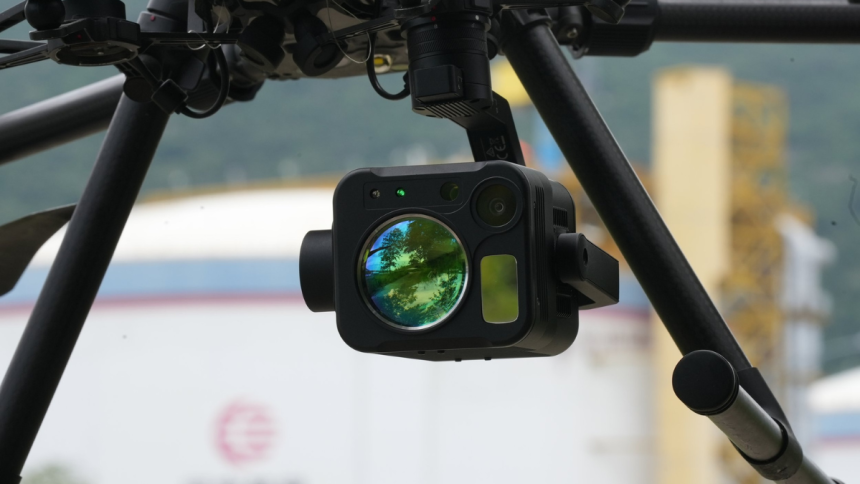With the continuous increase in urban development and garbage disposal, landfills have become a common way of solid waste terminal treatment in various places. However, the methane gas generated by these landfills during operation, in addition to posing a challenge to climate change, may also have a significant environmental impact on surrounding farmland and pastures. Especially when the landfill is close to the agricultural production area, if the methane leakage is not discovered and controlled in time, it may pose a threat to crop growth, soil ecology and livestock and poultry health through air or underground migration.
In this context, the methane detector is not only an environmental monitoring device, but also gradually evolved into an “invisible guard” in agricultural ecological protection. Starting from the farmland ecological risk, this article will systematically analyze how the methane leakage monitoring technology can be deeply integrated with modern agricultural protection work, and use real cases in Europe and the United States as support to explore the strategic position of methane detection technology in the future agricultural boundary protection system.
1. Source of farmland risk: Analysis of the mechanism of methane leakage in landfills
Organic waste buried in landfills decomposes under anaerobic conditions, releasing a large amount of methane gas. If these gases are not captured in time through an effective pipe network system, they may leak in the following ways:
Vertical escape: Directly discharged into the air from weak points on the surface, affecting the surrounding breathing environment.
Horizontal migration: Laterally diffused to adjacent farmland through underground cracks or infiltration channels, forming a “surface greenhouse gas hotspot”.
Water system carrying: Methane dissolves in groundwater in a high humidity environment and diffuses to the root system of crops along the irrigation system.
These leakage paths make the impact of methane not limited to the landfill itself, but may affect the agricultural ecosystem within a range of 1\~2 kilometers around, causing soil oxidation environment damage, crop yellowing and withering, and reduced forage yields.
2. How does the methane detector play a role in farmland protection
Faced with the highly concealed and complex diffusion path of methane leakage, manual inspection alone is far from enough. The new generation of methane detectors is particularly suitable for long-term and large-scale monitoring tasks at the agricultural boundary. Its core advantages are reflected in the following aspects:
High sensitivity and accurate identification: The methane detector using TDLAS (tunable semiconductor laser absorption spectroscopy) technology can monitor the changes in trace methane in the air at a resolution of ppb (parts per billion), which is suitable for “low-concentration long-term exposure” agricultural pollution risk assessment.
Automatic inspection and data upload: After being equipped with a drone system, the methane detector can realize high-altitude inspection of the farmland boundary, complete coverage detection without touching the ground, and upload data to the agricultural environment platform in real time, providing farmers and competent departments with visual monitoring results.
Multi-point control and map overlay: With the help of the GIS system, the detector can be overlaid with the farmland zoning map and soil type map for analysis, helping to accurately delineate high-risk areas and emergency intervention areas, and improve governance efficiency.
3. Real case: the Dutch “Green Livestock Barrier” project
The agricultural area around Utrecht, the Netherlands, is adjacent to a large urban landfill. Due to wind direction and terrain, some farmers have long reported abnormal phenomena such as reduced cow feeding and yellowing of grass. Since 2020, the local government has launched the “Green Livestock Barrier” pilot project, deploying 15 sets of portable methane detectors in the transition zone from landfill to farmland, and regularly using drones for flight monitoring.
Monitoring data show that the surface methane concentration in the northeast of the landfill has increased significantly under specific climatic conditions. Based on this, the project team optimized the landfill gas drainage system and provided subsidies for the transformation of ventilation corridors for farmland. Two years after implementation, the surrounding agricultural output value increased by 6%, and dairy cow health problems were significantly reduced.
This case fully illustrates that methane detection can not only detect “invisible” pollution sources, but also serve as a key link between the government, landfills and farmers.
4. Policy linkage: Building a new mechanism for agricultural boundary monitoring
In order to achieve long-term and effective agricultural protection, methane detection should be incorporated into the agricultural policy system, and a normalized and institutionalized linkage mechanism should be established. Specific suggestions are as follows:
Incorporate into the agricultural environmental risk assessment system: Take the risk of methane leakage as one of the indicators for farmland environmental assessment, especially when implementing planting structure adjustment and variety improvement around landfills, relevant test data must be referred to.
Government purchase of services to establish a long-term monitoring network: The environmental protection or agricultural authorities entrust third-party units to regularly conduct methane monitoring on farmland around landfills, and build a “regional air safety database” shared across departments.
Introduce an ecological compensation mechanism: Once the methane leakage is confirmed to affect farmland through a methane detector, the compensation procedure can be initiated, such as providing green agricultural certification, sales channel support or moderate cash subsidies.
Encourage farmers to participate in monitoring: Equip farmers with simple methane concentration alarm equipment or mobile terminal data reading tools to enhance their ability to identify pollution risks and report them in a timely manner.
5. From “landfill management” to “agricultural co-governance”
Landfills are no longer just “terminal treatment sites” in the corners of cities, but an indispensable part of modern agricultural space governance. The advancement of methane detection technology has enabled the impact radius of landfills to be scientifically quantified and controlled, and also made the safety of farmland and pastures more secure.
In the future, methane detectors should become standard tools at the agricultural boundary, just like pesticide residue detectors and water quality analyzers, embedded in modern agricultural infrastructure. At the same time, policy makers in the fields of agriculture and environmental protection also need to strengthen coordination, use science and technology as a bridge, and build a new ecological governance system integrating “landfill operation-agricultural ecology-risk warning”.
6. Conclusion: Let every piece of farmland be scientifically protected
The impact of methane leakage on agriculture may not be immediately apparent, but once accumulated, it will leave far-reaching traces in the food chain, ecosystem and even economic structure. Technological means with methane detectors as the core are unveiling the veil of “invisible pollution” for us, making the impact of landfills on the surrounding environment more transparent and controllable.
When technology enters the fields, every piece of cultivated land will receive due respect and protection. On the road of green agriculture, methane detectors are not only a piece of equipment, but also the first line of defense for farmland safety.
Lynn Martelli is an editor at Readability. She received her MFA in Creative Writing from Antioch University and has worked as an editor for over 10 years. Lynn has edited a wide variety of books, including fiction, non-fiction, memoirs, and more. In her free time, Lynn enjoys reading, writing, and spending time with her family and friends.















